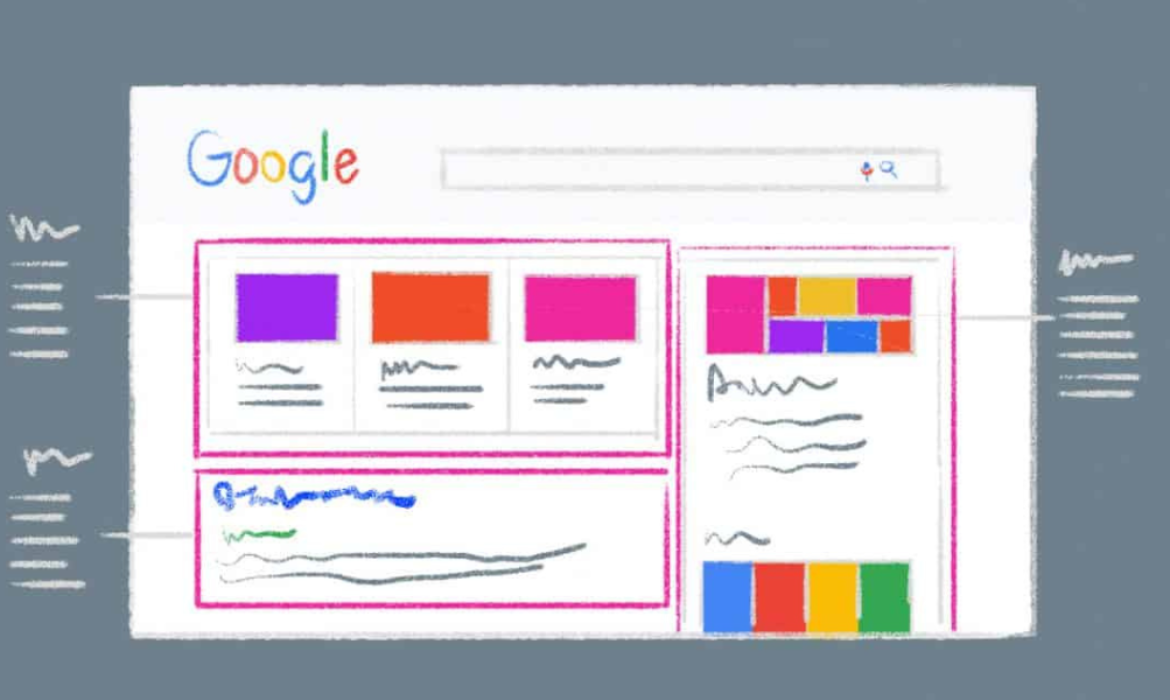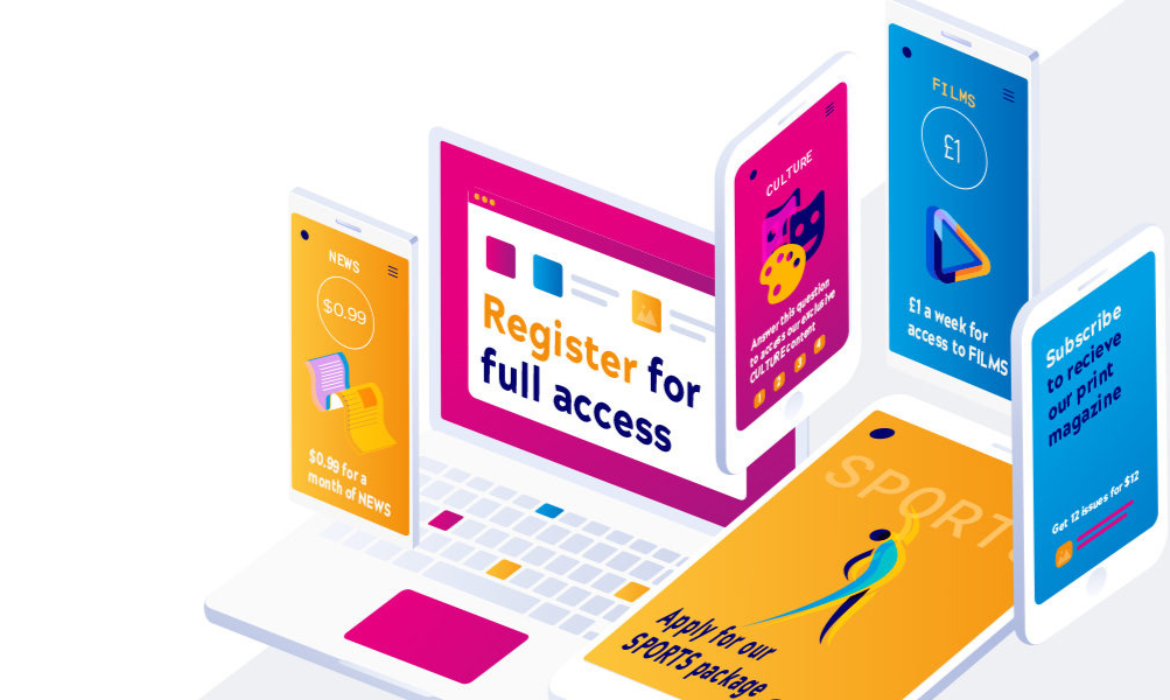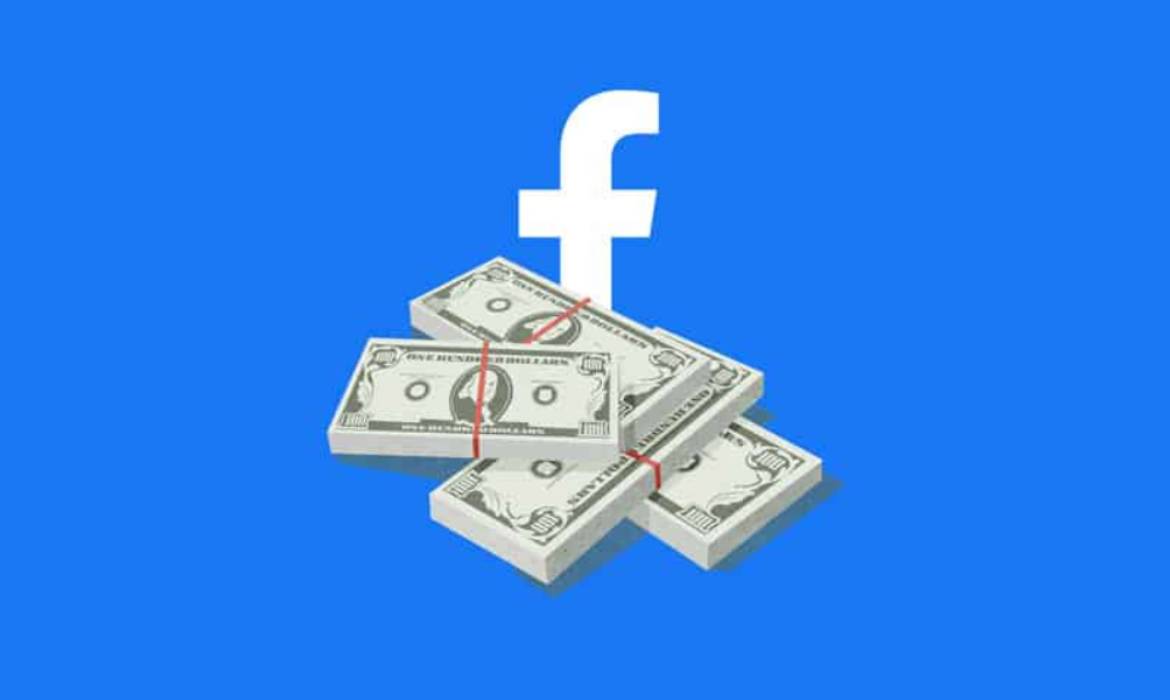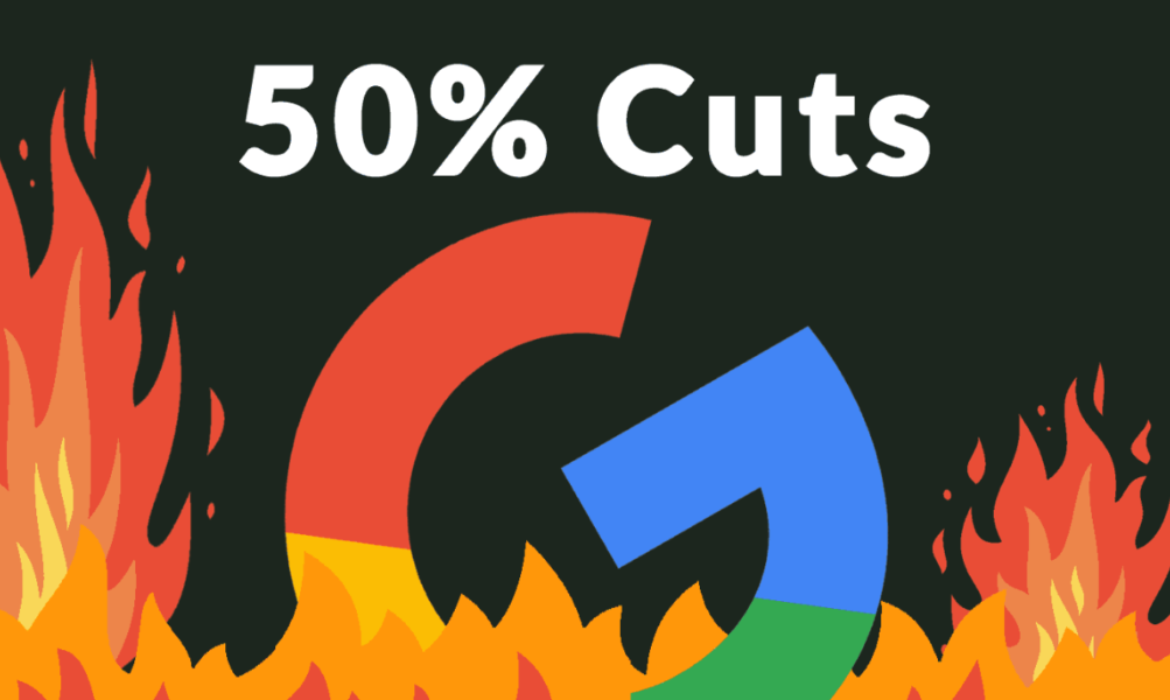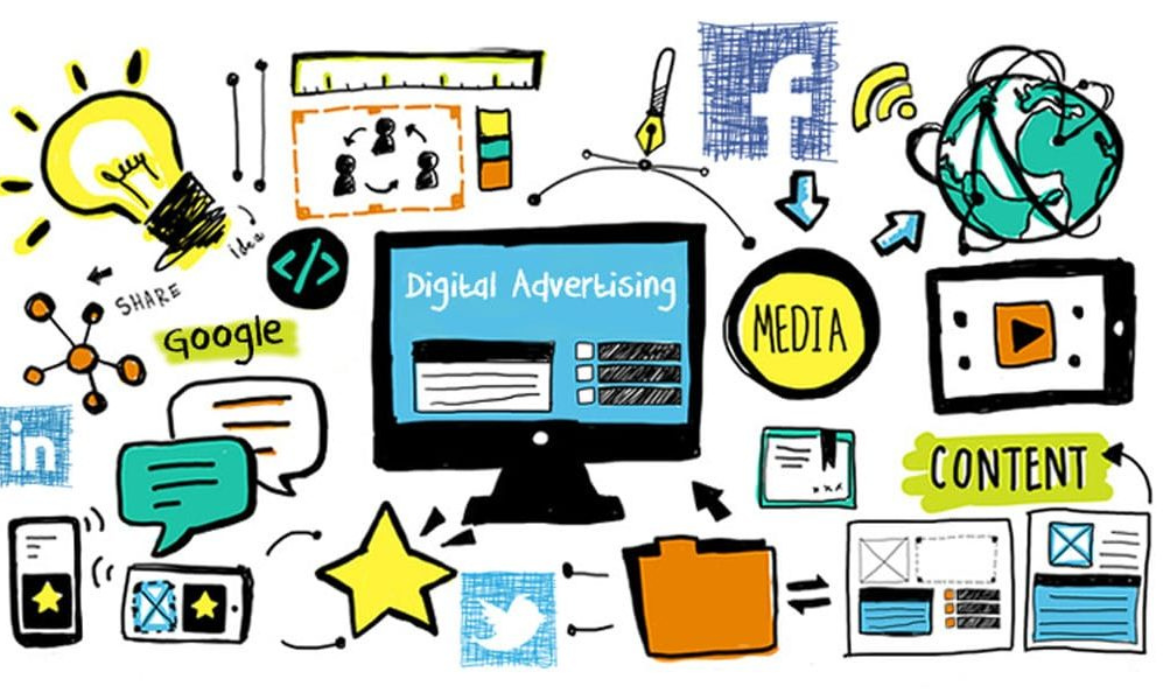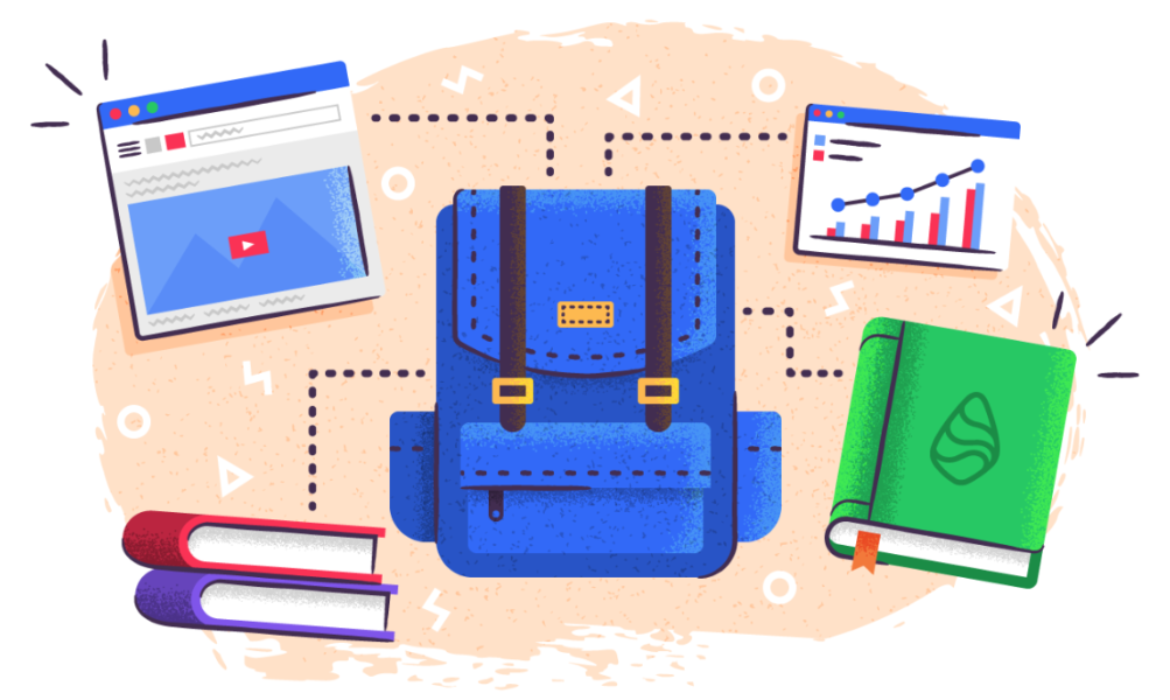Every 2020 Google SERP Feature Explained: A Visual Guide
How many searches would happen to Google every minute, month, or year? Have you wondered? Finally, the company has released updated data.
Every second, Google processes 63,000 search queries.
Every year, Google has 2 trillion searches.
A caveat, Keep ‘at least’ in mind while reading the figures.
This shows we are so obligated to the power of Google search behemoth and its mystical computing. Google holds nearly 72% market share of search engines.
Why it matters
Companies spend time and effort to develop fantastic content, great titles, meta descriptions, and permalink to rank high on the search and drive conversions. However, a key strategy is often missed- to capitalize and enhance their entry on Google SERP (Search Engine Result Page).
Incorporate the rich snippets into your online stores, websites, blogs, and more
SERP is the way
Google Search engine pages are now accurate, personalized, relevant, dynamic, and helpful. Using structured data, there are many visual enhancements made to the search engine result page which helps you to find the required information. It is essential to know the enhancements as indexability and site optimization has an impact on organic rankings.
Take a look at the enhancements and characteristics of each one:
- Direct Answer Box with short, rapid answers, lists, tables, or carousels may have an image to enhance it.
- Rich Snippet is the additional line of context below traditional SERP and is provided by the websites with price, ratings, etc to enhance the search engine result page.
- Rich Cards for mobile users.
- Knowledge Graphs shows up on the right of a SERP displaying curated images and information about the search.
- Knowledge Panels shows up to on the right of a SERP displaying curated images, information, directions specific to a brand or business.
- Local Pack is an integral part of the local search results with business information, reviews, and location and plays a key role in customer’s decision making.
- People also ask provides related questions and answers to the original query.
- Image Pack is a horizontal carousel of queries related to images or photos.
- Site Links is an expanded pack of links within popular sites. It may also include a site search field that is particular to the internal search mechanism.
- Twitter displays a carousel of tweets with clickable images and links.
- Newsbox: is a carousel of trending, top stories, or breaking news related to the query.
Why Use Rich snippets
By structuring the data and following Schema standards, you can utilize rich snippets and improve your overall visibility on the search engine as it educates the algorithms on the information within the page.
If your company or marketing team is not taking advantage of rich snippets then time to change strategy and develop a new solution. Rich snippets help you enhance your search, increase click-through rates, and engagement. If your company or marketing team is not taking advantage of rich snippets then time to change strategy and develop a new solution. Rich snippets help you enhance your search, increase click-through rates, and engagement.
The Big Picture
This infographic from Brafton, A Visual Guide to Every Google SERP Feature: Snippets, Panels, Paid Ads and More, provides insight on how rich snippets and structured data look like on a search engine results page and why it appears.

Publishers at risk by relying on transactional subscription technology
Transactional technology that enables transactional customer relationship is the base of the digital publishing ecosystem for the past two decades. This is how it works- attracting a reader, showing them a headline or a few words or an article, then coming up with a paywall to buy a short subscription package and moving on.
Every potential subscriber is treated as any other e-commerce customer with the same conversion funnel. We have built complex tech- stacks to support this approach and the ad-focused tools and subscription products remain unchanged and operational at certain levels in the digital customer journey. Till now, the flexibility in the customer experience was never a question. The journey was straight, simple, and direct with a single focus -deliver content, monetize on it, and maintain engagement. However, this transactional approach no longer caters to commercial or customer needs.
Lately, people are accustomed to making their own choices- which product is suitable for them, opt for premium or family packages depending on their needs and likes. The growing subscription economy has altered the way a customer perceives their product and services.
A successful recurring relationship is built on personalization when a customer can choose the product or package right for them and leave the rest. Jim Barksdale rightly said, “There are only two ways to make money in business. One is to bundle, the other is to unbundle.”
Businesses should be able to answer important questions like which one to pick, where, and how.
Presently, to answer the questions, publishers are enforced to hack the existing transactional tools and development teams are still investing their efforts on the complex system instead of building new products to grow revenue. Marketing teams want to explore with fine-tune new customers but are hindered by the same old inflexible technology.
Ultimately, publishers suffer badly due to lack of innovation, low ad -yields, complex technology, high costs, and no personalization for consumers. In simple words, the industry’s technology is unfit and outdated and it is worrisome considering the future is about dynamic products and personalization and automation. By relying on transactional technology with all limitations, publishers are at risk, and growth is restricted in this new economy.
Coronavirus led digital publishing growth
With COVID-19, the subscription economy has changed in six weeks which could have taken longer otherwise. The UK’s largest subscription site, iSubscribe witnessed its digital magazine subscription jump 400 % jump in volume. The traffic to the Financial Times website saw a jump of 250% Y-o-Y in the past month. There is an all-time high in the industry conversion rate.
But the question now is, will this continue post coronavirus crisis when the audiences find themselves with subscriptions that are not required?
So what next to sustain this?
Commercial teams need to set up a highly personalized customer journey without reaching to their technical team for help each time. They should independently learn, test, and change a range of products, packages, and revenue models.
This implies publishers should not rely on years of coding experience to handle but need integration of tools across the customer journey- offering personalized outcomes to every potential subscriber. Publishers need tools that don’t require coding to ensure that every client, prospect, and visitor is handled by the organization and the power to build change is in the hands of the specialists who know the market.
The world’s largest publications are using this platform to get ahead of the curve and be ready to steal the thunder once the markets settle -which might not take too long.
Tik Tok Tests ‘Shop Now’ Button For Influencer Videos
TikTok, mostly considered as an entertainment platform is improving its advertising offerings and nascent Creator Marketplace that matches advertisers with vetted publishers and influencers. DigiDay reported that TikTok is testing a new ad format namely the ‘Shop Now’ button. This would link brands to the leading influencers allowing the creators to display the Call-To-Action button in their videos. The ad revenue will be divided between TikTok and influencers.
The revenue split ratio is not decided yet but DigiDay reported that the company is discussing 20/80 splits in Tik Tok’s favor. This model allows TikTok to tap into revenue that was previously shared between advertisers and influencers.
Can you shop on TikTok?
The Shop Now option influences the user to shop the product right away is one way of having both – performance and direct response ad products. The creator CTA feature is still in the early testing stage and is available to only select advertisers and agencies.
As quoted by DigiDay, a TikTok spokeswoman,
“We are constantly experimenting with ideas and features to improve the app experience for our users. TikTok is a platform for creative expression and a big part of that is showing and sharing the things you love with others. We’re in the early stages of testing a way users can add links to products to their videos and will share more updates when we have them.”
Earlier this month we witnessed Levi’s was among the first brands to partner with Tik Tok’s influencers and trial the Shop Now’ program. It partnered with the influencers to promote its “Future Finish” customizable denim technology on the platform.
Levi’s reported the product views doubled on the ‘Future Finish’ page that featured in the campaign. All advertisers can access to ‘Shop Now’ button to help drive traffic to their websites but is different from the CTA Beta test said TikTok spokesperson to DigiDay.
Is TikTok following the YouTube way?
TikTok has increased its focus on Creators and for this, it had launched Creators Marketplace late last year. The Creators marketplace helps advertisers to filter out the platform’s top creators.
It appears that TikTok is moving towards YouTube Creator shared revenue model than the Instagram model. Amy Luca, chief executive at influencer marketing company TheAmplify said,
One of the things that Instagram struggles with is retrofitting some of their programs to pull out money from the gray market ecosystem that is being earned by influencers and paid by brands on their platform.”
Growing users of the social video app
TikTok has been growing rapidly over the past year and has been on a tear since the lockdown. Data company Apptopia estimates TikTok was the second top free app on iOs and Google Play stores in the U.S. on April 28. It is also estimated to have 328 monthly active users and was downloaded 100 million times worldwide between Mar 20 through April 28.
Jude Rajanathan, a global director at media agency Zenith stated that TikTok will work on improving its CTA buttons to push for more performances and direct-response ads.
Facebook Post Strong Earnings in Q1’20, Exceeds Analysts Projections
Its earnings season and Facebook has some relatively good news on that for the investors. It has impressively beaten Wall Street expectations on revenue and earning per share (EPS). Facebook ad revenue grew by 17% Y-o-Y despite the instability in the digital ad market due to COVID-19.

Image Credit: Facebook
Why does it matter?
Interestingly, Facebook was able to beat top and bottom-line revenue expectations amid the coronavirus crisis showing how its business is strong and growing. However, the company didn’t provide specific revenue guidance for Q2 due to the ongoing uncertainty but offered a snapshot on the revenues of upcoming quarters.
- Meanwhile, Facebook said that the current rise in engagement will continue but the usage will come down once the stay-at-home orders are lifted.
- The digital advertising industry has taken a hard hit due to shelter-at-home orders globally. Facebook said in a statement, “We experienced a significant reduction in the demand for advertising, as well as a related decline in the pricing of our ads, over the last three weeks of the first quarter of 2020.”
Let’s talk numbers
- Earning per share (EPS): $1.71 vs. $1.75 per share forecast by Refinitiv
- Revenue: $17.74 billion vs. $17.41 billion forecast by Refinitiv
- Daily active users (DAUs): 1.73 billion

Image Credit: Facebook
- Monthly active users (MAUs): 2.6 billion
- Family Monthly Active people (MAP): 2.99 billion monthly users across its family of apps. This metric helps to measure Facebook’s total user base across its main app, Instagram, Messenger, and WhatsApp.
- The average revenue per user (ARPU): $6.95
- Other revenue: $297 million which is driven by sales of VR headset ‘Oculus.’
- Cash and cash equivalents: $60.29 billion
What lies ahead?
- Facebook is the third internet company that posted strong Q1 results after Snapchat and Google despite the hindrances in the digital ad market. This shows big internet companies will keep dominating the advertising ecosystem due to the pandemic.
- CCS Insight chief operating officer Martin Garner believes the impact of the virus will lead companies to use digital services from advertising to collaboration.
“………..Although Google and Facebook will take a hit from Covid-19, we expect them to be leading indicators of recovery, as digital advertising and other services show early growth in economies getting back to normal.”
Google Cuts Marketing Budgets by 50%, Freezes Hiring.
Key Points
- Budget cuts and hiring freezes across marketing and across Google.
- An internal document reveals Google is cutting its marketing budgets by as much as 50 % for the second half of 2020.
- The marketing budget cuts may be a way to combat reduced advertising earnings in the wake of coronavirus.
- The development comes in less than a week from where Google is scheduled to discuss Q1 2020 results on 28th April.
Google is doing what other big tech companies are or will be doing soon to mitigate the coronavirus impact – cutting marketing budgets. An email viewed by CNBC, sent to the marketing employees this week was about budget cuts and a new hiring freeze for full-time and contract employees.
The e-mail stated:
There are budget cuts and hiring freezes happening across marketing and across Google…We, along with the rest of marketing, have been asked to cut our budget by about half for H2.
In 2019, Google spent $18.46 bn which includes employee compensation. One important area that required advertising was Cloud, as it competes with Amazon and Microsoft by hiring more sales representatives.it is unclear how such areas will be affected that need wide consumer reach.
However, Google confirmed that some areas’ budgets are being cut but not every area will be impacted as it adjusts plans.
A company spokesperson said in an emailed statement to CNBC,
As we outlined last week, we are re-evaluating the pace of our investment plans for the remainder of 2020 and will focus on a select number of important marketing efforts….We continue to have a robust marketing budget, particularly in digital, in many business areas.
Sundar Pichai, CEO in his memo last week stated,
The clear lesson from 2008 is that preparing early is key to weathering the storm and emerging in a position to continue long-term growth…We are reevaluating the pace of our investment plans for the remainder of 2020. That starts with taking a more critical look at the pace of hiring for the rest of the year.
…we continue to invest, but will be recalibrating the focus and pace of our investments in areas like data centers and machines, and non-business essential marketing and travel.
Sundar’s announcement emphasized that the company will not cut back in areas where consumers needed Google’s support for their growth and success. It will also continue with digital advertising which is in line with the stay at home audience.
Travel advertising earnings plummets:
Recently, a search marketer who knows travel advertising well tweeted the collapse of travel-related advertising and one of the contributing factors to a negative impact on the earnings.
When nearly 10% of your business is as a performance marketing supplier to Expedia and Priceline, and they stop advertising, the knock on effects are strong: https://t.co/TKNFl3YgOs
— Martin MacDonald 🏴🇪🇸🇺🇸🇧🇧 (@searchmartin) April 23, 2020
Following the news, Google shares had dropped nearly 2%.
Evolution of Digital Advertising: Happy 25th Digital Advertising And Many More To Come
“ We have the technology, finally, that for the first time in human history allows people to really maintain rich connections with much large numbers of people.” -Pierre Omidyar
The medium which has genuinely changed the landscape of advertising is the internet. It is the single biggest event in the past two decades that has truly revolutionized the ad viewing experience. Considering the high volumes of digital advertising, it is surprising to see how young it is and far it has come. Let’s understand the exponential growth of the internet advertising market.
At the beginning of 90’s the investment in digital advertising was zero. But over the years it has increased multiple-folds and total ad spending worldwide in 2019 will rise by 17.6% to $333.25 bn.

Image Credit: eMarketer
Even though the journey of digital advertising has been short but quite intense. In the last 25 years, a key factor in the rapid rise of digital advertising is technological innovations. From banner ads to artificial intelligence, digital advertising has made an eventful journey to deliver the right content to the right potential customer at the right time. But how much has it evolved over the years? Let’s take a trip down memory lane and explore the evolution of digital advertising.
The Advent of Digital Advertising
When computers were introduced in the 1970s, it was a simple device to exchange e-mails and digital information. Little was known, that it will have such a huge impact on digital advertising. Many marketing pioneers perceived it as a big business opportunity as the number of connected people grew. Within a few years, we witnessed different types of ads that connected with the audience.
In 1995, the total number of internet users was 16 million worldwide and subsequently reached 558 million in 2002.
- The Banner Era (1994-1996):
The first online advertisement appeared in the year 1994 marking the start of digital advertising. The oldest and first online banner ad by At&T appeared on Hotwired magazine with a run time of three months for a price of $30,000. The ad produced click-through rates of 44%. Following the success of AT&T, online display ads became popular and advertisers were looking for ways to better target ads mostly bases on consumer demographics.
From the early start, advertisers were aware that internet advertising is different from traditional advertising. The businesses began to comprehend that messages through email are cost-effective than traditional advertising. The internet became a playing field and investors enjoyed the novelty factor of it. It was a lucrative business so many entrepreneurs, investors, and advertisers started investing in this money-making machine.
Meanwhile, in 1995, Yahoo was launched and became the primary search engine. In its heyday, it charged up to $30 to $100 to run the banner ads. Back then, advertisers were required to provide the standard 468 x 60px banner ad for online campaigns. (see below)

Image Credit: 1st Webdesigner
In the same year, one of the first ad-serving technologies ‘Double Click’ was launched with an intent to track the performance of the ads and ROI on it. In 1997, Pop-up ads were invented to gain the attention of ad-blind users but soon it became a bane of online advertising that led to pop-up ad blockers.

Image Credit: 1st 1webdesigner
- Channel Era (1999-2000)
This period saw the rise and fall of online advertising.
The web was expanding rapidly and the number of websites was increased day-by-day. The year 1998 saw the birth of the Google search engine– a player to this day dominates the digital advertising industry and revolutionized advertising forever with the launch of its ad system ‘Google Adwords’ in 2000. The main objective of Google Adwords was sponsored search experience that didn’t undermine the quality and relevance of search results through the Google Quality Score model which is still used today.
At the same time, ‘Mobile Advertising’ made its debut.’
Online advertising was at its peak in the late 1990s and investors were investing in millions in dot-com startups. $8.2 billion were invested in online advertising between 1995 and 2000.
In mid-2000, the first-ever code was written for Adblocker which led to the beginning of a battle between publishers and adblocking. In 2002, Google revamped Adwords, introducing the option to advertise using the Pay-Per-Click (PPC) model. The year 2003 and 2004 marked launches of two prominent platforms LinkedIn and Facebook respectively. Exactly, one month after the launch, Facebook delivers its first advertisement in the form of banner ads called ‘Facebook Flyers’.
However, mid-2000 witnessed the biggest downfall as the dotcom bubble bursts. The huge influx of money that created the online advertising bubble began to dry up and the value of internet-based companies was decreasing. The stock market collapsed leading to recession. Many companies’ stock prices fell sharply and others shut down.

Image Credit: 1stwebdesigner
The only company that survived the dotcom bust was Google who took the opportunities that it had to offer in their stride and filled in the space left by the players.
- Social Era (2005-2008)
After the bubble burst, internet advertising saw a decline except for search engine technology. The highly efficient and dependable search engine technology market grew to USD 2.3 billion in 2003.
Meanwhile, in 2005 YouTube- the world’s largest video advertising platform made its debut and in the following year, Google purchases YouTube for $1.65 billion. The social network brought a new form of customer participation. It gives you the freedom to like, share or rate information. YouTube offered companies to promote their product and services on the most valued media platform by consumers ‘Video’ without any big investments.
In 2006, Facebook introduces sponsored links and smaller display ads that concentrate on user demographics and interest. Around the same time, a major advertising platform Twitter was launched with a concept of communication-based in 140 characters and making hashtag a household word. The introduction of the iPhone in 2007 was a major tipping point in mobile advertising. Social networks offer many opportunities to reach potential and existing customers.
- The Native Era (2009-2011)
As the number of companies advertising through the internet increased, advertisers began to look for less conspicuous ways to promote products. Due to this, the use of native advertising gained momentum and was on a rise as a result of higher CTR and engagement.
The year 2010 gave birth to Instagram exclusively for iOS devices. In a matter of time, it became popular marketing and advertising platform which later was purchased by Facebook. In the following year, Snapchat was created and it supported the widespread use of video with augmented-reality enabled filters that have created a stir amongst millennials.
Twitter introduced promoted tweets and paid advertisements to celebrities. Promoted tweets allowed users to reach a larger audience and generate more engagement from the existing and new followers whereas paid advertisement means sponsored tweets. Businesses recruit celebrities to promote their brands and services to their followers. For instance, Charlie Sheen made a record as he became the first person to reach 1 million followers in 25 hours after his account was created. A few days later, he started to sponsor tweets through ad.ly
- The Modern Era (2012- present)
Since 2004, digital advertising has recovered from the downfall and advertisers have accepted the importance of online advertising. Digital advertising is more sophisticated with innovative technologies and branding tools.it more interactive and uses Flash and Java for graphics.
In 2012, the Internet of Things(IoT) came into picture influencing marketing and advertising. In the next few years, there were many interesting developments. Instagram introduced sponsored posts allowing users to run ads by promoting old or new posts. In 2014, Pinterest made its debut with social media advertising growing bigger.
The growing adoption of smartphones hinted advertisers to focus on in-app mobile advertising and leave the mobile web browser. For instance, voice technology ‘Alexa’ allows users to do voice searches. The year 2015 witnessed mobile ad traffic surpass Web traffic- IAB UK reported for the first time mobile overtakes desktop with total spend hitting £4.8bn mark. Video consumption proved to be the strongest area.
Real-Time marketing became a buzzword. In 2016, Pokemon Go became a sensation. A classic example of augmented-reality on mobile devices attracted more than 45 million users. In 2017, two technological development came happened. Firstly, Ad.txts that were introduced by IAB Tech to improve transparency in the programmatic advertising ecosystem. Secondly, Apple announced AR Kit and Google followed with AR core for mobile AR apps and advertising.
The growing use of voice technology, artificial intelligence, and other digital technologies introduces new areas of advertising. A key point to include is an in-depth understanding of consumer behavior and delivering personalized and relevant advertisements.
The European Union’s General Data Protection Regulation (GDPR) was implemented in May imposing restrictions on companies to change the way of collecting data, protecting the privacy and personal information of the users. Even California passed a strict privacy law that changes the data collection method. Conforming to the recent changes, digital advertising Industry plans to replace Cookies with First-Party Data.
Wrapping up
In this phase of digital transformation, the top priority of companies is to provide a personalized end-to-end customer experience in real-time. Millions of advertisers, marketers, companies, or businesses are relying on digital advertising.
7 Tips That Saves A Fortune On Your Pay Per Click Budget
On average, Google Ads advertisers receive $2 revenue on every $1 spent. This means an advertiser can expect to make double the money invested on this platform but there is no guarantee. It is compelling but intimidating as well.
Essentially, it is gambling. It is looking for your investment to pay off than making zero dollar profit. It is common to believe that you need higher investment for higher returns.
But the truth is:
You don’t need a big budget to generate sales. A low budget PPC campaign will also lead to effective results. Here is how you can do it.
7 Tips to get optimize your PPC campaign
1. Optimize Ad Copy to Increase CTR
One of the best ways to save money on Google Adwords is by writing a better ad copy. A poor ad copy will not bring you desired returns while a better ad copy will appeal to your audience, increase your click-through rate (CTR), and Quality Score. The quality of ad text is a major contributor to build your Quality score. The quality score has a direct link to the success of your PPC campaign and therefore, it makes sense to invest time to optimize your ad copy.
2. Set your daily maximum budget
Before starting with the campaign creation and actual investment, project your result in advance to keep realistic goals.
A low budget is not a cash cow but a relative term.
For instance, enter your maximum of the low-budget spend for a single day. If you can spend $150 per month, which implies $5 per day.

Image Credit: AdEspresso
The next step is to comprehend the common data-based averages to get an idea about the cost per click and whether it aligns with your budget.

Image Credit: AdEspresso
In Q1 of 2018, the average CPC’s were $2.76 and CTR was 4.23% on Google ads
3. Use Ad Extensions
The second money-saving tip is to use ad extensions that improve your CTR. It allows the audience to take direct action from the searches whether you want them to call your business, download your app, know your offers, locate you on maps, or visit your webpage. Extensions make your ad more competitive and encourage users to know more about your business.

Image Credit: Neil Patel
4.Geolocation:
The most overlooked but critical feature in AdWords. For example, a dentist in Boston doesn’t want the ad to appear in searches of dentists in Los Angeles.
In the campaign settings, advertisers can easily target a specific country, state, DMA, city, and even zip code. Radius targeting is also possible around specific addresses to get even more granular.

Image Credit: Wordstream
Geolocation settings are also important for businesses selling goods and services from a physical location to set optimal working hours of their operations.
5. Try out single keywords to target:
When you are on low budget campaigns on PPC, you cannot bid on multiple keywords to get results. It will narrow the spread of the result, need longer set up, unique landing pages raising your time, effort and cost. If you have a budget of $5 a day, it is futile to bid on ten keywords costing that amount for a single click.
Use a ‘single, specific, good’ keyword. You shouldn’t be targeting head terms like helicopter skiing. Someone searching ‘Helicopter skiing’ has no idea what they want – they will click on your PPC ad, browse and then leave.
The keynote is to be as specific as possible with the keyword. The more specific is your keyword or long-tail keywords, cheaper is the cost and better is the click-through rates and in return the quality score.
To calculate the effectiveness of your keyword bidding strategy, try this
Keyword searches x CTR = Estimated traffic
So what kind of keyword you should find?
Use the keyword research tool to unlock all keyword possibilities including new keyword niches and less common keywords that have the potential to drive traffic and conversions.
This tool gives you valuable data like bidding estimates for top bids and top spot bids considering the competition.

Image Credit: AdEspresso
For instance, Look for a medium volume with less competition keyword and search the results that match the intent. (Intent means what the searcher expects to achieve with the search.)
The search is “Best CRM” which means the searcher is looking for the rankings of CRM’s and not the CRM product that is claiming to be the best.

Image Credit: Ad Espresso
6. Call-only campaigns:
Call only ads are ideal for advertisers trying to generate phone calls from their PPC campaigns. Some businesses with smaller budgets have challenges with landing pages. Visitors might abandon their shopping cart or download or anything if directed to a landing page at any stage of the conversion process with the risk that they may not complete the activity. Therefore, call-only campaigns enable users to call you directly by clicking on the ad. Furthermore, the finest part of these ads is that they appear only on those mobile devices that are capable of making calls. Hence, you will not squander money on unsuitable devices.
Don’t miss the opportunity on prospective customers by directing to landing pages which may never complete.

Image Credit: Wordstream
7.Ad Scheduling
Ad Scheduling is essential to control your budget, especially if funds are tight. Similar to geolocation settings, dayparting or ad scheduling help you maximize your business visibility at a certain time when your customers are online.

Image Credit: Wordstream
For instance, if your store is open between 8.am to 5.00 p.m, Monday to Friday, set your ads to display during the working hours to drive the traffic. However, if you sell online, you are always open then you can set your ads when the customer traffic is at peak to avoid any negative ROI.
Ad scheduling in collaboration with geolocation, you can exercise strong control over where and when your ads are to be shown to the users while being careful not to hamper your efforts with excess control.
Final Words
It is not the budget that determines the success of your PPC campaigns but strategy. Google Ad words have many features to offer and you can gain impressive results on a tight budget.
It is sensible to start small and expand your reach with a limited budget once you comprehend which strategy works best for you. Spend time in your PPC account to identify the problematic areas and correct them. This will save you from any financial damage and give insight on the outcome of your strategy.
Relevant keywords, well-designed PPC strategy, and a good understanding of your target audience can aid the potential of your campaign even with a tight budget.

